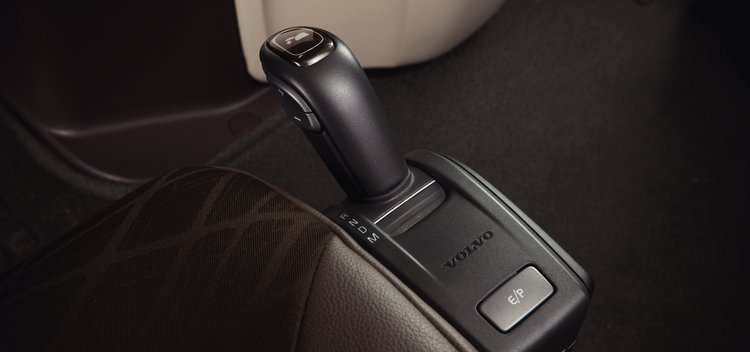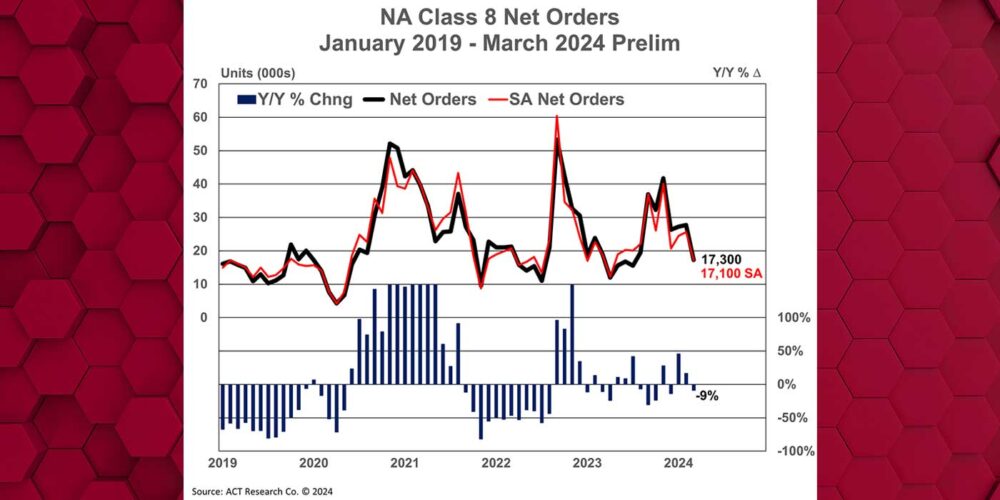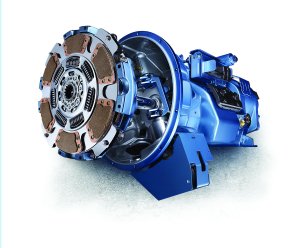
Pouring over specs, investigating equipment options and analyzing your equipment usage, you work hard to build the most efficient, dependable trucks for your fleet. You carefully take stock of your business needs and build a truck to exceed those expectations, calculating costs and mitigating equipment risks. And then you put that perfectly spec’d machine into the hands of the world’s most unpredictable force—humans. An inexperienced driver or one with bad habits, can quickly drive over many equipment efficiency improvements with a heavy foot or incorrect gear selections. As a result of a fleet manager’s need to minimize driver impact, automatic and automated manual transmissions (AMT) have grown in popularity, offering to normalize the human element of truck driving.
“As you can imagine, one of the things that I think fleets fight with is the driver that goes down the road in ninth gear for an extended period of time because maybe there are a lot of hills and they don’t want to downshift. Picture that driver going down the road for eight hours in that gear,” said Ryan Trzybinski, development and product planning manager for Eaton. “Fleets are excited about having the ability to narrow the bell curve on their drivers and set some parameters like top speed, from there the Eaton UltraShift PLUS and Smart Advantage AMTs make sure the vehicle is in the right gear at the right time for maximum efficiency. Other fleets can choose to give their drivers latitude.”
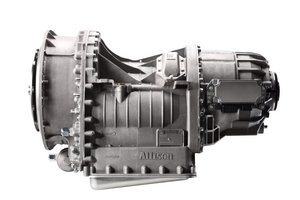
The first step in figuring out if an automatic or AMT transmission is a good fit for your fleet is looking at your driver pool. Do you have experienced, efficient drivers who you trust to drive the truck to the maximize performance and fuel efficiency ? Or is your driver pool less experienced and/or efficient? Answering that honestly will help you determine if you need to try to mitigate your efficiency losses by taking some control out of your drivers’ hands.
Drivers are human, they have tough days, bad moments, get distracted, etc. “The DT12 [Detroit’s AMT offering] is a machine, it follows the logic of the computer, which accounts for many of the same factors a driver uses to make decisions but in a scientific manner with no emotion, guessing, etc. involved to ensure the engine, transmission, axle are all working together to provide the best fuel economy and performance possible,” said Brad Williamson, powertrain marketing manager for Daimler Trucks North America (DTNA). “Drivers control what gear the transmission is in, which drives what RPM range the engine is in. This directly impacts fuel economy; the higher the RPMs, the more fuel is used. There are also ‘fuel economy sweet spots’ in every engine fuel map. While drivers have information on the optimal operating range, this can change based on many factors—the AMT knows where it is at all times.”
Control the force
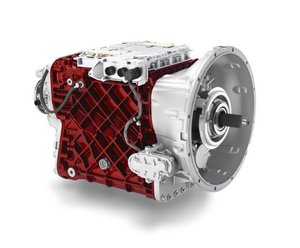
There’s a big difference between a fully-automatic and AMT transmission. An AMT is a manual transmission with a clutch that is controlled electronically: AMTs use a clutch to disengage the drive train, like a manual. However, the automated clutch actuator electronically controls it with no input needed from the driver. Automatic transmissions use a torque converter, where the engine and drivetrain are connected by a fluid coupling.
There is discussion within the industry as to the efficiency benefits of an automatic vs. AMT transmission. Some OEs maintain that automatic transmissions are more efficient, claiming that AMT transmissions lose power and torque during shifting, while other OEs claim that automatics lose some energy and responsiveness to the fluid of a torque converter.
Looking at the issue from an operational fuel efficiency standpoint, the selection of an automatic or AMT transmission comes down to control. Many AMTs—offered by the likes of Volvo, Mack, Eaton, Detroit—include a manual mode to give the driver manual control over the transmission when needed.
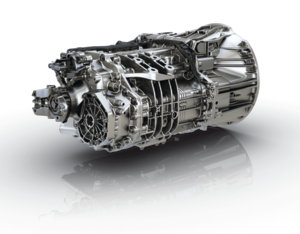
“The key factor is the intelligence of the transmission, The [Volvo] I-Shift can instantly predict and select the most efficient utilization of the engine,” explained Chris Stadler, Volvo Trucks product marketing manager. “It knows when to shift the gears for the truck and is programmed to determine a truck’s optimal driving position by continuously monitoring the changing conditions of road grade, vehicle speed, acceleration, torque demand, vehicle weight and any type of resistances.”
Automatic transmissions, like the ones offered by Allison Transmissions, automate the transmission, while providing efficiency features. Using the Allison automatic transmission as an example, transmissions can be selected with two different calibrations. Normally, one is for max economy when lightly loaded and on flat terrain and the other is when a little more performance is needed when heavy or on grades. Allison Transmissions when specified will automatically switch between these two calibrations depending on the load and grade.
“The mechanical aspect of the Allison Automatic Transmission is a balance between durability robustness and efficiency,” said Steve Spurlin, executive director, international application engineering and vehicle integration, Allison Transmission Inc. “The electronic controls and how they shift the transmission automatically is where the fuel economy gains can be made.”
The fuel efficiency bottom line
In terms of increasing overall efficiency, the transmission can be a key component—whether it’s an experienced driver properly operating a manual transmission or an automatic or AMT transmission doing the shifting. Both automatic and AMT transmissions seek to lessen the efficiency bell curve by taking a good amount of control out of the driver’s hands.
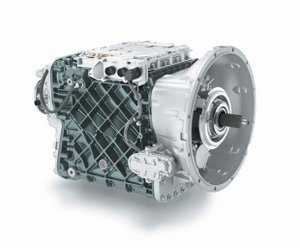
“The transmission is a central part of the powertrain and vehicle contributing to improved fuel economy,” said Roy Horton, Mack powertrain marketing manager. “All highway applications benefit from AMT transmissions, such as the Mack mDRIVE because they offer optimized fuel economy and efficiency—especially when it is part of an integrated powertrain solution because the communication is seamless among the vehicle, engine and transmission.”
So let’s get down to brass tacks: How much fuel can you save by spec’ing an automatic or AMT transmission?
Like nearly all efficiency questions the answer is: It depends. From the equipment point of view, it depends on what other equipment with which the transmission is working. “Obviously as a major element of a vehicle’s powertrain, the transmission can be very important in this regard. In addition to the transmission, the engine, the axle ratio and the duty cycle itself all work as a system to influence fuel usage,” explained Allison’s Spurlin. “The key is to optimize the parts that can be specified to achieve the best utilization of the fuel burned as the vehicle does its work.”
To start with, the most important part of fuel efficiency to consider is the engine and how it is matched to the transmission. Several manufactures, such as DTNA trucks—Freightliner and Western Star with the new DTNA engine transmission—Volvo and its I-Shift AMT transmission, and Mack’s mDRIVE AMT offer integrated powertrains.
To ensure maximum optimization, some OEs work directly with transmission suppliers to fine tune their vehicles. PACCAR, for instance, has worked closely with Eaton to facilitate optimized shift points for the PACCAR MX-13 engine, explained Charles Cook, Peterbilt product marketing segment manager. These software enhancements, along with new transmission hardware on the horizon, ensure quality, reliability and fuel efficiency.”
Stephen Hampson, sales director of WABCO North America, supplier of control components and electronics to automate a manual transmission, stressed the importance of optimizing the AMT transmission for the specific engine and axle ratio. The electronic parameters need to be set appropriately and drivers are trained to use the equipment properly.
“Engines are producing their power and torque at lower and lower RPMs these days. It is important to match the drive axle ratio to the desired cruise RPM, which is probably lower than with an older engine,” said DTNA’s Williamson. “Direct drive transmissions are also gaining popularity, and require a much faster axle. Drivers and fleet managers should keep an open mind to spec’ing these ratios to take advantage of improved fuel efficiency.”
On the other side of the efficiency equation you have the wild card—your drivers.
“According to studies, a driver can affect the fuel efficiency of a truck by up to 30%,” said Stadler. “A driver might hold a gear longer when climbing or descending grades, which can consume more fuel. Inexperienced or unproductive drivers are more likely to stay too long in a gear or not skip shift while operating a truck. These behaviors can have a significant effect on fuel efficiency.”
While the automatic and AMT transmissions largely help reduce the driver impact, there are still a few things a driver can do to improve efficiency. It’s a good idea to educate drivers on the features of the automatic or AMT transmission, particularly in the case of AMTs where the driver could potentially have more control over the transmission.
Drivers need to be aware of the features so they do not fight the logic and adversely impact overall fuel economy. For example, skip shifting revs the engine to higher RPMs, but under acceleration gets the vehicle up to cruise speed faster, thus saving fuel. Similarly, shifting to neutral going down a hill is a definite “no-no” when operating a manual transmission, but AMTs can manage it just fine. Horton stressed that it’s important that drivers let the powertrain systems do what they are designed to do by avoiding unnecessary intervention such as gear holds or manual shifts.
Additionally, WABCO’s Hampson recommended paying attention to the correct modes offered by the transmission—economy mode for normal drive to enhance fuel efficiency and performance mode for difficult driving conditions.
You’ve properly spec’d your transmission, optimized the drivetrain systems, educated your drivers and are ready to put your new automatic or AMT to work. From the manufacturers we polled, you’re looking at a typical miles per gallon (MPG) savings of 3 to 5%. Mileage may vary, of course. Some fleets have reported upwards of 10% MPG savings with properly spec’d trucks and responsible drivers. Remember—every fleet and application is different. While there is the benefit of improved efficiency, an exact savings cannot be determined. In the end, you have to find the transmission solution that fits your fleet.

